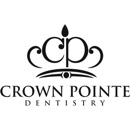
Anterior Displaced Disc
The temporomandibular joint is the complex hinge that joins your lower jaw and skull together. It works similarly to a ball and socket, but also has the unique ability to glide forward via a series of muscles, ligaments, and fibrous tissues all working together.
A key component of the ball and socket is a piece of fibrocartilage separating the two, called the articulator disc.
It ideally remains on top of the ball, or condyle, as is slides in and out of the socket. This ensures smooth jaw movement and optimal protection of the bone surface.
In some cases this disc becomes displaced due to the jaw resting back further than normal, and slips off of the condyle, riding in front of it when the jaw opens and closes.
With no cushion between the condyle and the surrounding nerves and blood vessels, they become compressed and may create discomfort in the surrounding muscles and ligaments of the head, neck, and face.
Many factors can contribute to the development of an anterior displaced disc, including jaw misalignment or asymmetry, misalignment of the teeth, clenching or grinding, posture issues, or trauma.
Some symptoms of an anterior displaced disc include jaw pain and headaches, earaches, restricted jaw movement, jaw clicking and popping, and potential locking of the jaw.
There are a variety of treatments available to assist with properly diagnosing and alleviating some or all discomfort caused by an anterior displaced disc. It is important to work closely with your doctor to create a treatment plan that best meets your unique needs.
Monday-Thursday: 8:30 AM - 5 PM
Friday: 8:30 AM - 2 PM
appts@crownpointedentistry.com
817-441-7654
220 Shops Blvd.
Willow Park, TX 76087
- Home
- What is Bioclear?
- Patient Education
- Dental Conditions
- Abfraction
- Avulsed Tooth
- Anterior Displaced Disc
- Bruxism (Clenching & Grinding)
- Causes for a Gummy Smile
- Causes of Tooth Pain
- Centric Relation
- Chipped Tooth
- Compensatory Eruption
- Congenitally Missing Teeth
- Consequences of Bone Loss
- Cracked Tooth
- Dental Cyst
- Dental Erosion
- Endodontic Abscess
- Filling vs. Crown
- Fractured Tooth
- Fractured Tooth (Complicated)
- Gingival Recession
- Gingivitis
- Healthy Occlusion
- Horizontal Root Fracture
- Ill Fitting Crown
- Obstructive Sleep Apnea
- Peri-Implantitis
- Periodontal Disease
- Plaque and Calculus
- Progression of Decay
- Single Tooth Loss
- Recurrent Decay
- Root Resorption
- Understanding Tooth Wear
- Home Maintenance
- Dental Conditions
- Patient Resources
- Patient Loyalty Program
- New Patients
- Download Paper Forms
- Post-Operative Instructions
- Post-Op Instructions for All On Four
- Post-Op Instructions for a Composite Filling
- Post-Op Instructions for a Crown
- Post-Op Instructions for Dentures
- Post-Op Instructions for an Implant
- Post-Op Instructions for Permanent Veneers
- Post-Op Instructions for a Root Canal
- Post-Op Instructions for Scaling and Root Planing
- Post-Op Instructions for a Surgical Extraction
- Post-Op Instructions for a Temporary Bridge
- Post-Op Instructions for a Temporary Crown
- Post Op Instructions for Temporary Veneers
- Our Services
- Our Reviews
